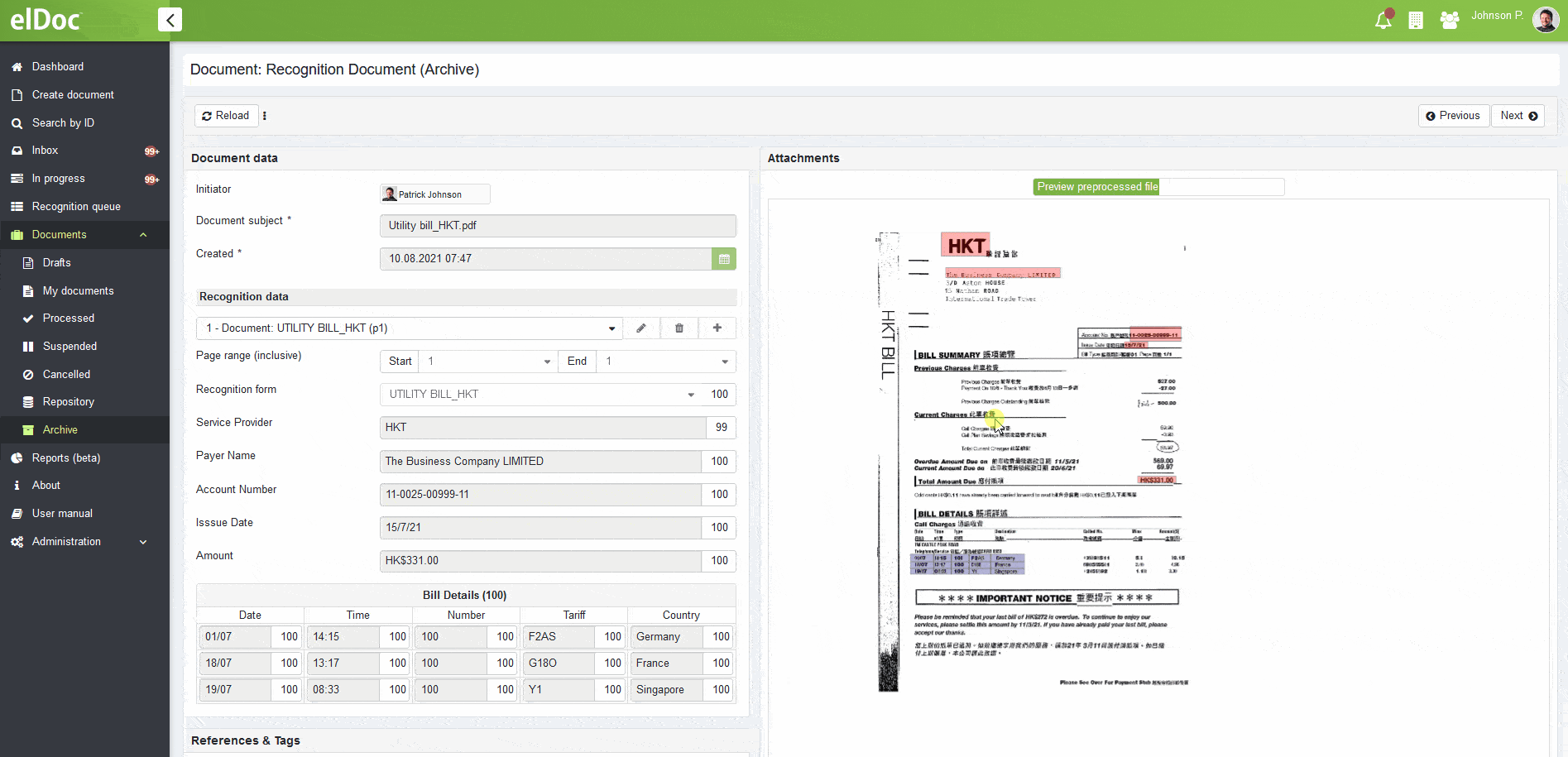Intelligent Document Processing and Optical Character Recognition: what is the difference?
This is so evident today that every company dealing with large amount of data that is to be processed daily with involvement of human capital is now seeking for new ways on how to optimize manual data processing to increase operational efficiency, minimize operational risks and improve overall customer journey.
Many believe that certain automation in terms of data processing can be achieved with RPA (Robotic Process Automation) Technology to tackle the challenge of manual data processing. And indeed, it is so and many companies around the globe achieved great results applying RPA to greater manage data processing by replacing human with robots. However, still large portion of semi-structured and unstructured data is being processed manually by many even high-performing companies. The most common business case where human capital heavily involved is the processing semi-structured / unstructured data: particularly reading and capturing the data from scanned or digitally generated documents with further data processing, validation, posting.
Having this business case in place and the corresponding requirement to bring automation in to “read and capture the data from scanned or digitally generated documents with further data processing, validation, posting”, many companies started to look at OCR (Optical Character Recognition) as a technology which may help to tackle the challenge of semi-structured and unstructured data processing. However, is OCR a right and only one technology for it? What is the difference between OCR (Optical Character Recognition) and IDP (Intelligent Document Processing)?
Let’s try to consider the definitions for OCR (Optical Character Recognition) and IDP (Intelligent Document Processing) to greater understand the key differences.
OCR (Optical Character Recognition)
OCR stands for Optical Character Recognition. It is a widespread technology to recognize the images of machine printed text by converting the recognized data into machine-encoded text from scanned document or photo. This technology is widely used to convert large amount of data located on images to the electrically edited, searched format.
Undoubtedly, this technology is very meaning when it comes to necessity to digitize paper-based documents and convert the data to the electronical format. However, can plain OCR capture target data for us (for example, “issue date” that is placed on the 23rd page of the file that contains multiple document types which are spanning across 100 pages)? The answer is “No”, if we are talking about just plain OCR. If you would try to verify this business scenario in practice – you may see that you will get a raw, plain text of whole data set captured from 100 pages but not your target field “issue date”. Thus, applying only OCR technology for target data capture and intelligent document processing is not obviously enough.
You may find also interesting to read more and watch demo on the tests we have run leveraging different OCR capabilities: Tesseract, Google Vision API and elDoc
IDP (Intelligent Document Processing)
Intelligent Document Processing is much broader technology vs OCR. Literally, Intelligent Document Processing contains OCR itself but definitely goes beyond pure optical character recognition capabilities.
Intelligent Document Processing is a combination of different stack of technologies and automated capabilities that are brought together such as OCR, OMR, ICR, Computer Vision, AI, Document Management, BPM, Analytics & Reporting, Document Access Control, etc., with an aim to process different type of images of different complexity from the end-to-end perspective with possibility to capture required data set with further data validation and processing.
There could be also different definitions for this technology as IDP technology is just emerging on the market and different vendors may include into IDP term different set of automated capabilities and sub-definitions. But in general, IDP shall have the following capabilities:
- Image enhancement before processing (image right-sizing, rotation, whitening background, removing unnecessary noise, image cropping, enhancing contrast, etc);
- Target data location and capture;
- Converting recognized data to the required format;
- Automated document classification;
- Multi-page and multi-files document processing with target data capture;
- Post data validation and post data processing;
- Data validation below the defined threshold;
- Data processing analytics and reporting;
- Flexible automated capabilities for document workflow customization (BPM);
- Document management, document archive, intelligent document search;
- Document access control, granular access rights management in scope of document administration, etc.,
As you may see only just reading the definitions of OCR and IDP - the difference between these two technologies is very obvious. Greater understanding of the difference also comes when it is a time to run a test and see all in action.
More good and quick read: Intelligent Document Processing capabilities
Willing to see IDP in action, please read more and watch a demo: elDoc – Intelligent Document Processing
Explore more - Automate more with AI:
Automated Bank Statement Processing
Automated Invoice Processing
Automated Transcript Processing
Automated Payment Advice Processing
Data extraction from Utility Bills
Data capture from ATM receipts & Payment slips
Willing to test IDP right away - you are more than welcome to try elDoc free!
About «elDoc»
«elDoc» - Integrated Intelligent Automated Platform for Document Understanding, Document Workflow Automation and Content Management from Anywhere. «elDoc» is enterprise level solution available as SaaS and on-prem for end-to-end Intelligent Document Processing. elDoc is powered with cognitive technologies (Artificial Intelligence including Computer Vision) to be capable to process intelligently documents (scanned and digitally generated) of any complexity with further end-to-end document processing and document workflow automation.
About «DMS Solutions»
DMS Solutions» is a technology company, a professional service provider delivering Intelligent Automation Solutions and is an authorized implementation partner of “elDoc” - Integrated Automated Platform for Intelligent Document Processing, Document Workflow Automation and File Management.
We leverage Computer Vision, Machine Learning, Artificial Intelligence to build a powerful digital workforce for your business to win on the market. We focus on exploring new ways to apply disruptive technologies and recent inventions to bring innovative automation solutions in. We break boundaries and help clients to achieve their strategic goals through delivering next-generation solutions.
Our Clients are high-performing enterprises coming from different industries: banking & financial services, insurance, logistics, healthcare, manufacturing & retail, government, real estate, transportation, oil & gas, energy, etc. We operate globally having HQ in Hong Kong.


